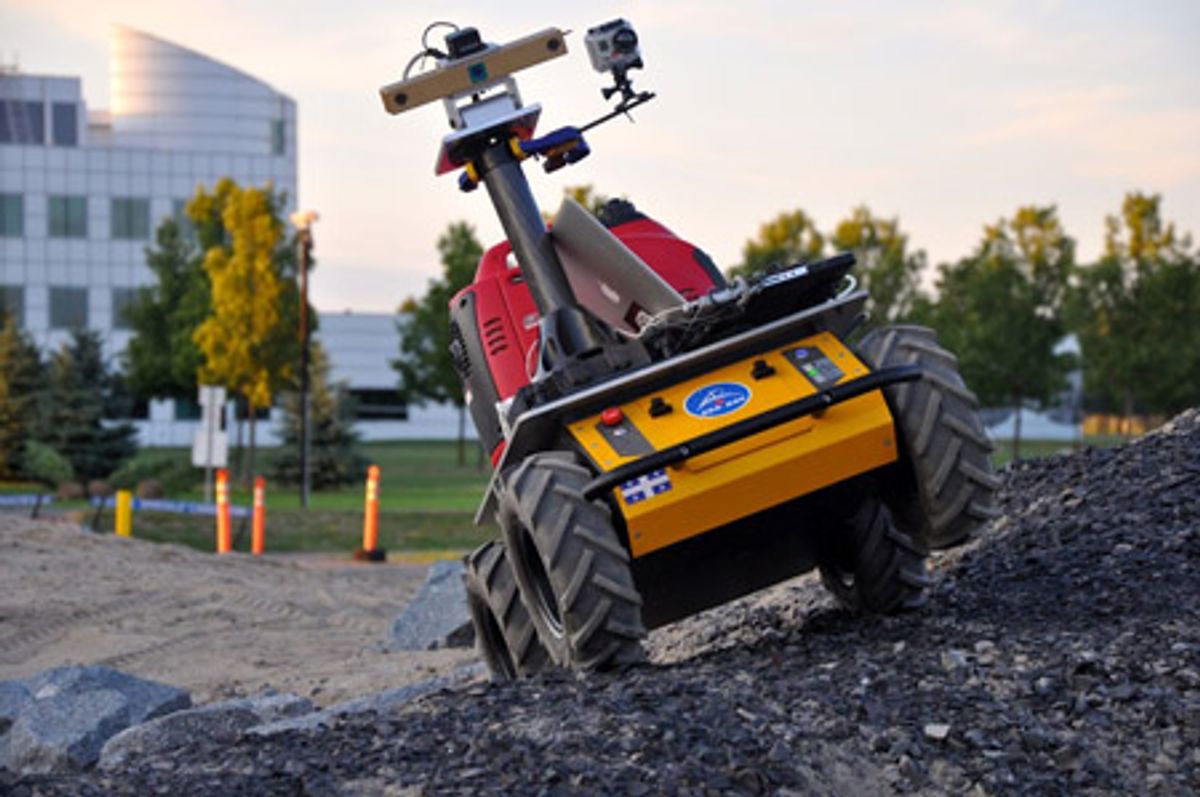Clearpath Robotics tipped us off to some awesome work being done with one of their Husky robotic platforms. The Autonomous Space Robotics Lab (ASRL) at the University of Toronto Institute for Aerospace Studies is developing their own planetary rover, which might one day sniff out methane on the surface of Mars.
Building your own Mars rover is not nearly as crazy as it might have been just a few years ago. Yes, NASA can spend a couple billion sending a stupefyingly complex robot to the red planet, but now that space has opened up a bit to private industry, with enough work (and some financial help, obviously) sending your own rover out to explore space no longer has to depend on a major government. Nobody's managed to pull it off yet, but it is a possibility... For example, Google has already put $20 million on the line for the first privately funded robot to get to the moon.
ASRL, it seems, is ready to skip the moon and head straight to Mars: the rover they're working on is intended to seek out and
destroy
analyze sources of Martian methane, a gas that shouldn't be nearly as plentiful on Mars as it is, and nobody's quite sure what's going on. The rover, which is built on top of one of Clearpath's Husky A200s, is equipped with a 3D camera, spectrometers, LIDAR, and a gas-powered generator, which is a handy way to extend the runtime of your battery powered bot.
Here's some video of the robot in action at the Canadian Space Agency's Mars Emulation Terrain, doing some autonomous methane huntin' with an appropriate soundtrack:
Now, it's probably not realistic to expect to find a bunch of handy retroreflector targets on Mars, but the robot can also use the sun to search for methane, or rely on a passive methane "sniffer." The idea is that you could release this little guy on the surface of Mars, and he'd wander around on his own, asking for human assistance when needed but otherwise just localizing and sampling whatever sources of methane are around.
Even if this robot for some reason doesn't make it all the way to Mars, the students involved in the project are getting a bunch of experience (and having fun, presumably) building and programming it. And I can't think of anything better to have on your resume when applying for a job at NASA or JPL or a bunch of other places than "built an autonomous Mars rover."
[ ASRL ]
Thanks Paul!
Evan Ackerman is a senior editor at IEEE Spectrum. Since 2007, he has written over 6,000 articles on robotics and technology. He has a degree in Martian geology and is excellent at playing bagpipes.





